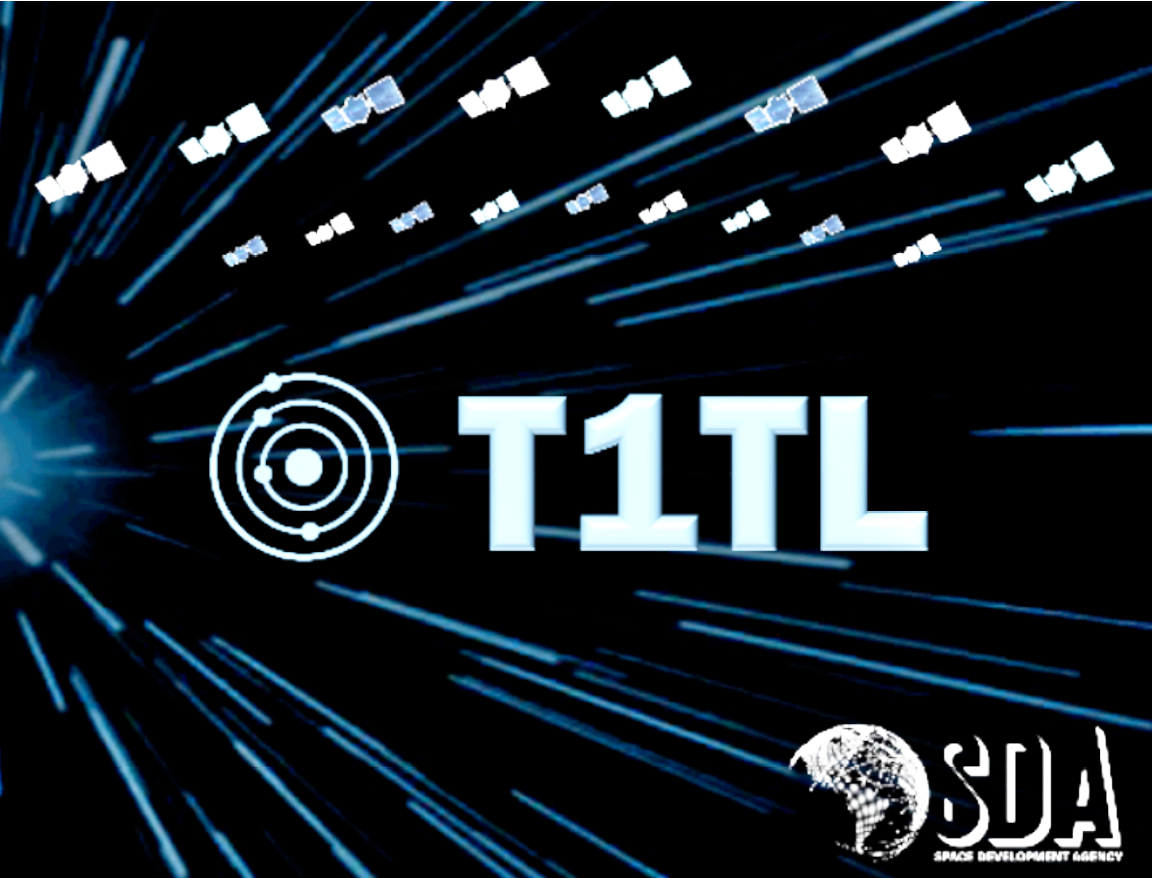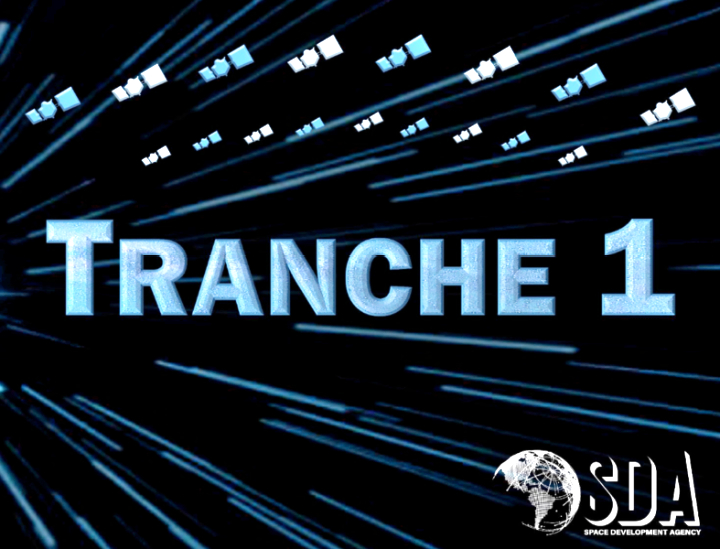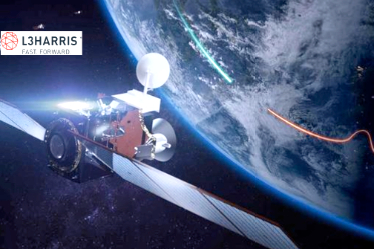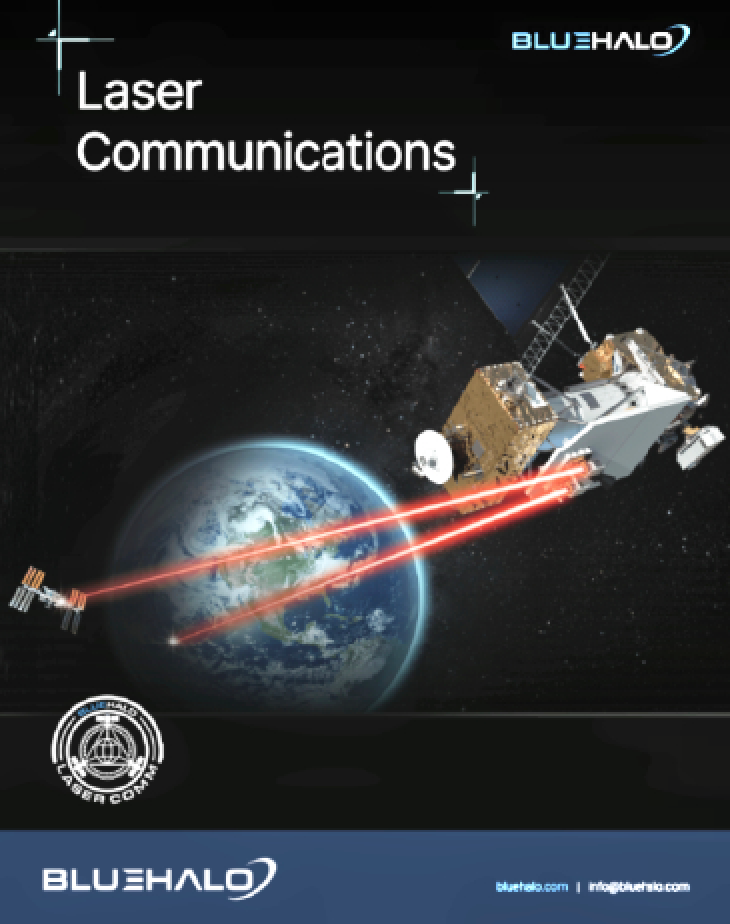Space Development Agency contracts for 28 satellite for the Tranche 1
Tracking Layer: L3Harris statement + Northrop Grumman to complete the spacecraft builds
The Space Development Agency (SDA) has awarded two prototype agreements with a total potential value over $1.3 billion for the establishment of the Tranche 1 (T1) Tracking Layer, providing the initial missile warning/ missile tracking warfighting capability of the National Defense Space Architecture (NDSA) — these satellites will start to launch in April of 2025.

The agreements are awarded to teams led by L3Harris Technologies, Inc. of Melbourne, Florida, and Northrop Grumman Strategic Space Systems of Redondo Beach, California, to each build a space segment consisting of two planes with seven space vehicles per plane — 14 satellites from each performer for a total of 28 satellites in four planes — to collect infrared data and provide network communications.
Each agreement includes a launch services segment for launch preparation and a ground segment for operations and sustainment.
These prototypes will provide global and persistent indications, detection, warning, tracking, and identification of conventional and advanced missile threats, including hypersonic missile systems.
The Tranche 1 Tracking Layer will build upon the Tranche 0 Tracking Layer capabilities with targeted technology enhancements, expanded coverage, increased integration, established calibration processes, and greater production efficiencies.
The Tracking Layer is focused on developing a global constellation of infrared missile warning and missile tracking satellites that integrate with the Transport Layer’s low-latency meshed communication network, enabling conventional and advanced missile tracking from proliferated LEO.
The Tranche 1 Tracking Layer satellites will be flown out of SDA’s Operations and Integration Centers at Grand Forks Air Force Base, North Dakota, and Redstone Arsenal, Alabama.

In fiscal year 2022, Congress provided SDA $550 million in additional funding to accelerate deployment of the Tracking Layer, with specific direction to demonstrate a space-based missile warning, tracking, and targeting capability in support of U.S. Indo-Pacific Command.
The vision for the NDSA includes fielding a system that provides a resilient global capability to all combatant commands as rapidly and affordably as possible.
SDA published the Tranche 1 Tracking Layer solicitation on March 17, two days after the President signed the fiscal year 2022 appropriations bill into law.
Leveraging Other Transaction Authority, SDA completed a competitive source selection and finalized the agreements within four months of the published solicitation.

L3 Harris is awarded a prototype agreement with a potential value of approximately $700 million and Northrop Grumman Strategic Space Systems’ award has a potential value of approximately $617 million.
The proposal was received and evaluated under Other Transaction Authorities solicitation SDA-PS-22-02. The Space Development Agency of Washington, DC is the contracting activity (HQ08502290003)
“The T1 Tracking Layer effort is a critical step toward building the National Defense Space Architecture,” said Derek Tournear, SDA director. “SDA is confident that selection of the L3 Harris and Northrop Grumman teams provides the best overall solution to accelerate delivery of a low-Earth orbit constellation with wide-field-of- view infrared sensors for a global missile warning and missile tracking capability in Tranche 1, on schedule. I’m pleased to see our industry partners building the marketplace necessary to quickly deliver new space capabilities to the warfighter.” “The speed with which SDA pursued this effort is commendable, given the severity of the hypersonic missile threat,” said Christopher E. Kubasik, L3Harris Chair and Chief Executive Officer. “This prime contract is a testament to our growing impact in the space community, and affirms our strategy of being a Trusted Disruptor is gaining traction.”
“Northrop Grumman brings decades of proven experience in missile detection, identification, tracking and communication systems,” said Robert Fleming, Northrop’s Vice President and General Manager of the Strategic Space Systems Division. “We look forward to working with the Space Development Agency and our industry partners on the nation’s most pressing challenges in missile defense.”
Recognized as DoD’s constructive disruptor for space acquisition, SDA will accelerate delivery of needed space-based capabilities to the joint warfighter to support terrestrial missions through development, fielding, and operation of the National Defense Space Architecture.
For more information on SDA, contact OSD. SDA.Outreach@mail.mil or visit www.sda.mil.
L3Harris Technologies (NYSE:LHX) has been awarded a contract to build the Space Development Agency’s (SDA) Tranche 1 Tracking Layer satellite program to serve as “eyes in the sky” detecting, identifying and tracking advanced missile threats — the contract has a potential total value of $700 million.
L3Harris will build a 14-vehicle satellite constellation that will include optical communications terminals, infrared mission payloads, Ka-band communications payloads and multiple pointing modes – advanced technology specifically designed to identify and track the fastest missiles known to exist. The program also includes related ground, operations and sustainment support.
L3Harris developed four prototype satellites under the SDA’s Tracking Layer Tranche 0 award in 2020. The four space vehicles produced under the $193 million firm fixed- price contract will launch in 2023.
“Investing in resilient space assets and acting as a Trusted Disruptor in this market are core to our long-term strategy,” said Christopher E. Kubasik, Chair and Chief Executive Officer. “Our customers have been clear; missile defense technology and space domain awareness architecture must be diversified, and our teams are positioned to deliver those cutting edge solutions.”

“Flowing from our values as an organization prioritizing schedule, then cost, the Tranche 1 Tracking Layer went from solicitation to award in approximately 120 days and continues to demonstrate the Space Development Agency’s ability to acquire capabilities at speed,” said SDA director, Derek Tournear.
He continued, “We look forward to collaborating with our industry partners to quickly deliver missile warning/missile tracking capabilities as part of the Department of Defense hybrid architecture that will provide critical and timely information to the joint warfighter in the very near future.”
“L3Harris is successfully executing SDA’s foundational Tracking Layer Tranche 0 program, which set their strategic way forward for rapidly deploying relevant mission capabilities to our nation’s warfighters,” said Kelle Wendling, President, Space Systems, L3Harris. Wendling continued, “This Tranche 1 win demonstrates our ability to nimbly scale from initial demonstration to proliferation with enhanced mission capability, resilience, global coverage, and speed to deployment as threats continue to evolve.”
Northrop Grumman Corporation (NYSE: NOC) has won a competition to build and deploy a proliferated low-Earth orbit constellation of 14 satellites with infrared sensors for the Space Development Agency’s (SDA) Tranche 1 Tracking Layer (T1TRK).
T1TRK will detect, identify and track hypersonic weapons and other advanced missiles from their earliest stages of launch through interception.
T1TRK will detect, identify and track hypersonic weapons and other advanced missiles from their earliest stages of launch through interception.
Northrop Grumman will leverage its experience with the Tranche 1 Transport Layer (T1TL), to provide a resilient, low-latency, high-volume network in space to support U.S. military missions around the world.
In May, Northrop Grumman successfully completed a System Requirements Review for T1TL – another element of SDA’s National Defense Space Architecture.
Once deployed in 2025, the T1TRK satellites will operate in up to four, LEO planes, interconnected with T1TL satellites. Each will feature a wide field-of-view infrared sensor, three optical communications terminals, and a Ka-band payload for communications.
“Northrop Grumman will provide an integrated space vehicle that will accelerate our nation’s ability to defend against the most pressing challenges in missile defense,” said Robert Fleming, Northrop’s Vice President and General Manager of the Strategic Space Systems Division. “T1TRK builds upon Northrop Grumman’s experience with T1TL and will demonstrate a capability to track advanced missile threats.”
BlueHalo awarded million$$ AFRL contract for Optical Laser Communications Flight Terminals + Ground Station
BlueHalo has been awarded a contract to deliver a pair of optical laser communications proto-flight terminals and a ground station to demonstrate on-orbit processing of satellite positioning and timing for the Air Force Research Laboratory (AFRL) at Kirtland Air Force Base.
Work will be performed in Albuquerque, New Mexico, and is expected to be completed by February of 2025.

The contract will support the development and demonstration of key technologies: GEO-to-LEO Optical Uplinks and Downlinks, Space-to-Ground Links, Positioning and Timing Accuracies over Optical Communication Links, and interoperability with multiple optical communications standards.
BlueHalo’s Laser Communications Systems Division is dedicated to developing next- generation optical terminals and key enabling solutions.
The firm specializes in high data rate communications, ranging and timing services with low probability of intercept or detection (LPI/LPD) due to extremely narrow beam widths.
“As a core area of technological focus at BlueHalo, our Laser Communications Systems Division is rapidly expanding capabilities based on robust internal research and development programs,” said Vikram Manikonda, BlueHalo’s Chief Technology Officer (CTO). “This cutting-edge contract will allow us to apply the Company’s extensive experience developing and fielding optical communications systems to continue advancing innovations in laser communications.”
“BlueHalo is excited for this opportunity to partner with the Air Force Research Laboratory to continue pushing optical communications technology forward,” said Dan Gillings, BlueHalo Sector President. “A demonstration like this leverages our previous successes in the field and builds on our expertise in optical jitter control and precision pointing to achieve technological breakthroughs.”
BlueHalo is purpose-built to provide industry-leading capabilities in the domains of Space Superiority, Space Technology, Directed Energy/Counter-Unmanned Aircraft Systems (c-UAS), Autonomy, Advanced Radio Frequency (RF), Cyber, and Signals Intelligence (SIGINT). BlueHalo focuses on inspired engineering to develop, transition, and field next-generation capabilities to solve the most complex challenges of our customers’ critical missions and reestablish our national security posture in the near-peer contested arena.
bluehalo.com



